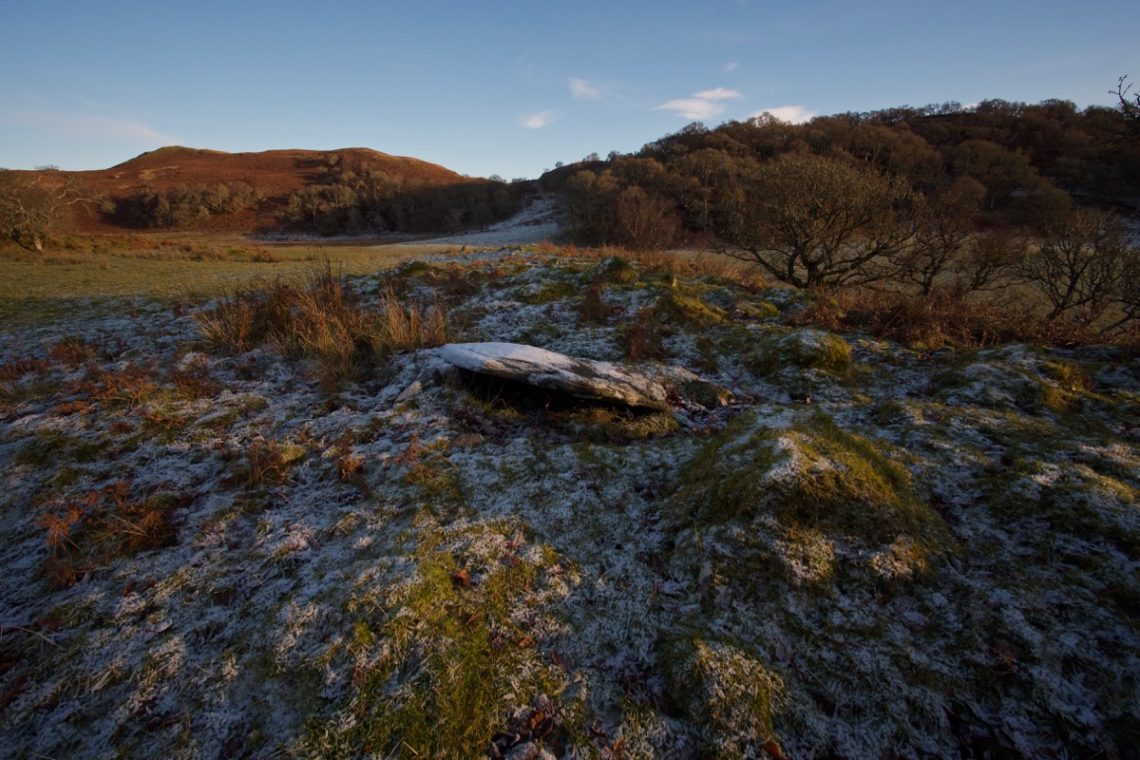
White frost and winter light
There have already been more successive days of frost this winter than we had in the whole of last year. The ground is rock-hard, and ice-crystals have made a near-permanent crusting on trees and grasses in the cold hollows that the sun never reaches. Some of these crystals are so tall and intricate that they look like miniature forests.
One advantage of frozen ground is that (theoretically, at least) it’s possible to cross patches of bog and keep your feet dry. The other day we put this daring idea to the test at Rhudle (or Rhudil) in the south of Kilmartin Glen, where there are a couple of chambered cairns and an old chapel marked on the map. We followed a track as far as a bridge over a burn, stopping frequently to admire the ferns and mosses that were growing over an old stone wall, each frond delicately laced with rime. A couple of long-horned cattle watched us with placid interest, and a jay screeched from a far wood.
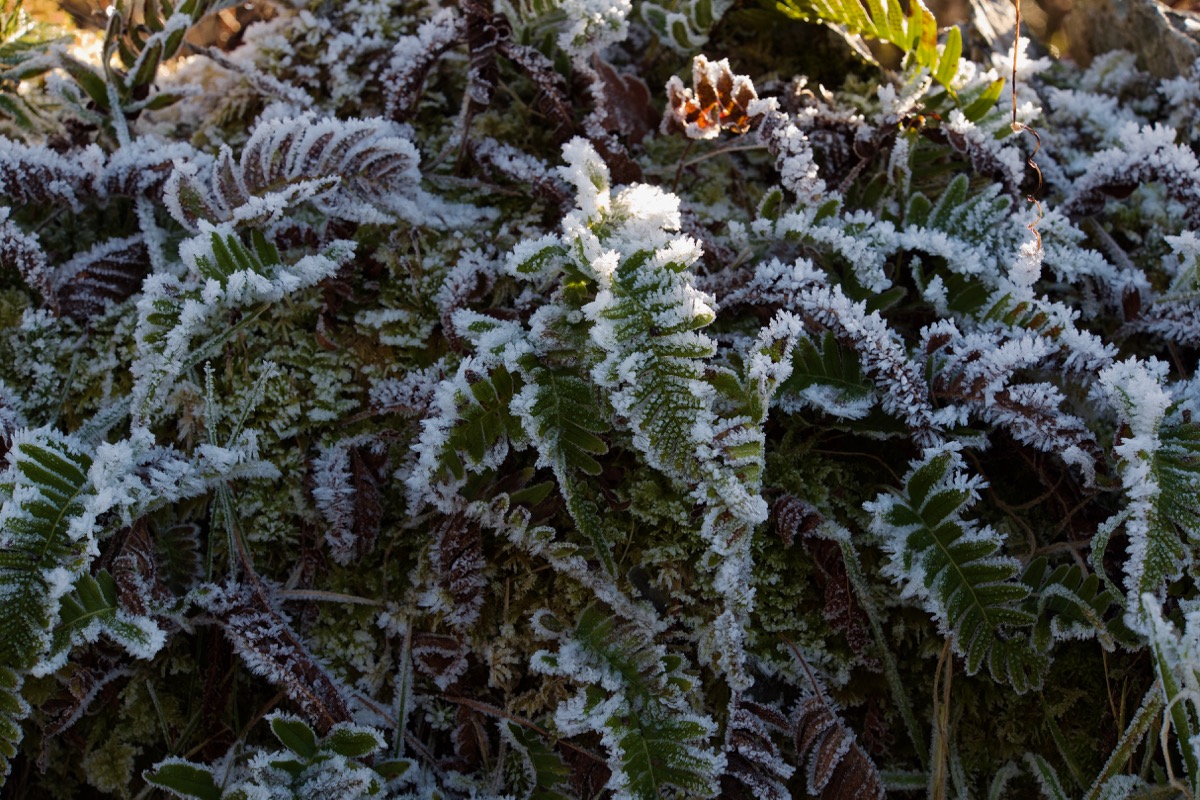
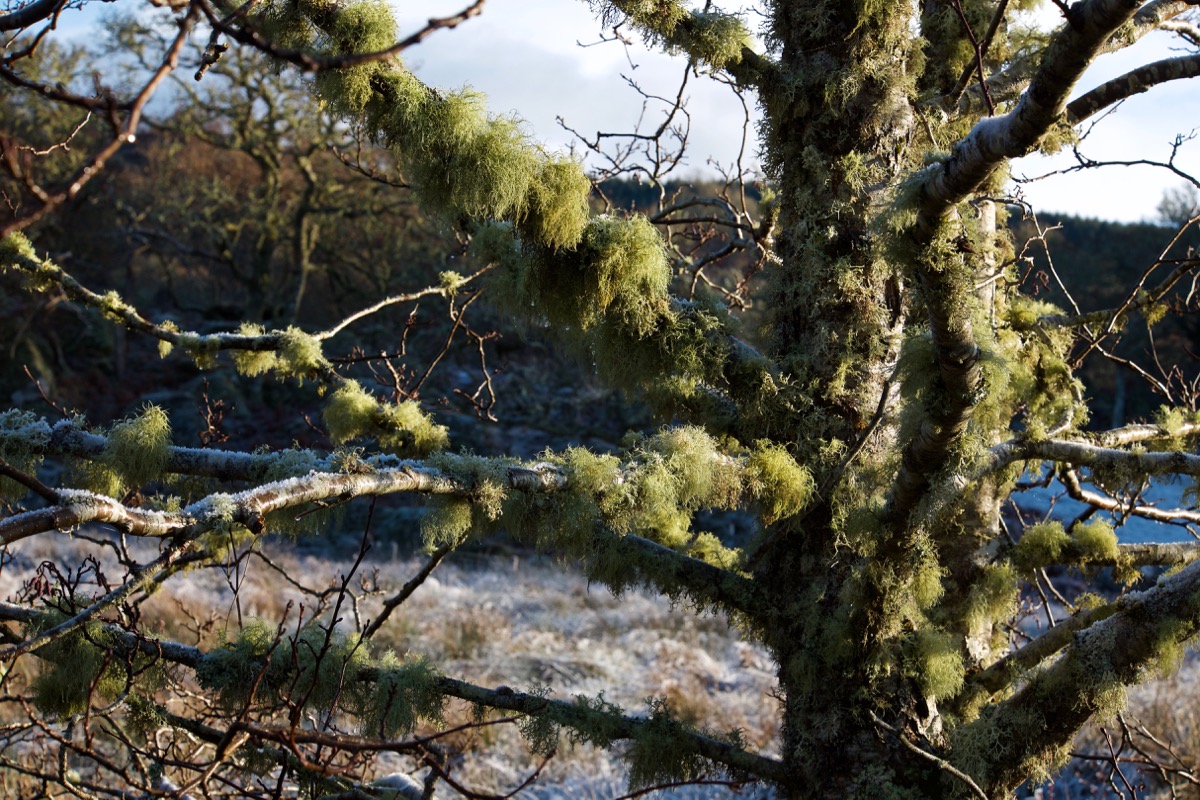
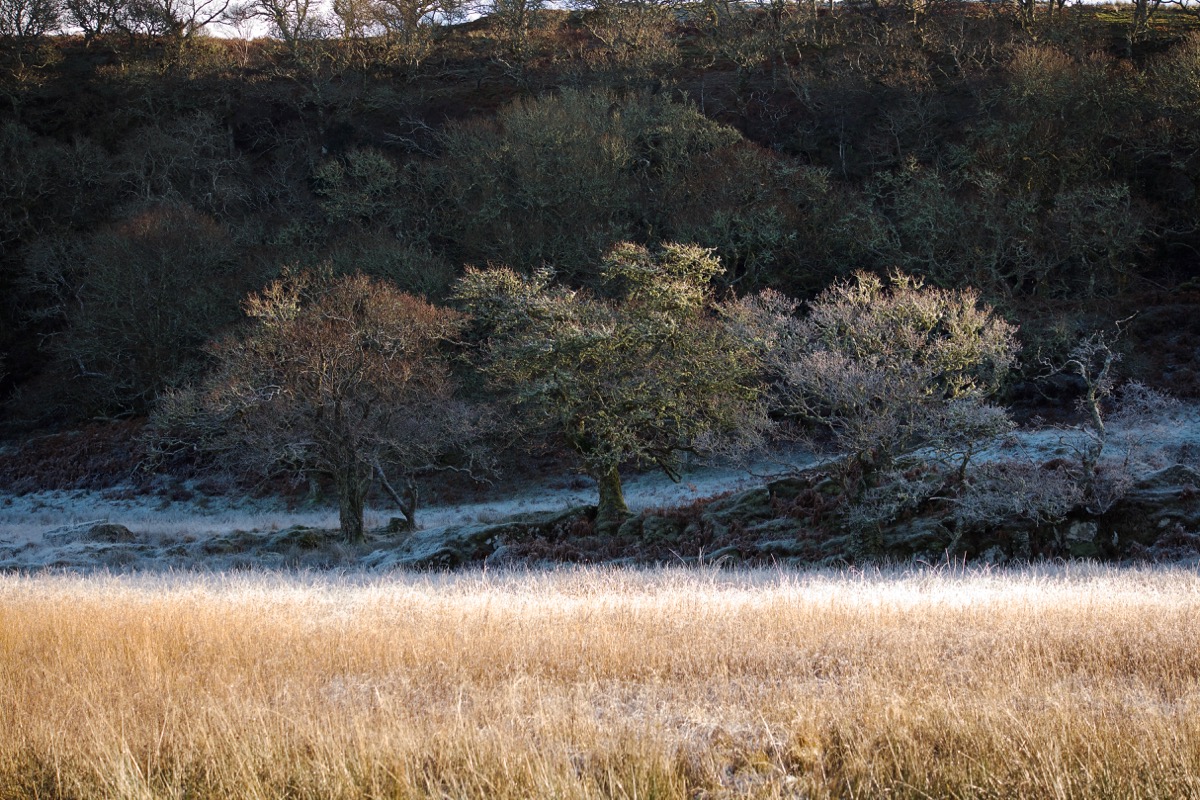
Over the wall, we could see a number of rounded knolls in an adjacent field. Some were big enough to be wooded, while others were smaller with just a few trees and an interesting rocky profile. These latter ones looked promising, so we crossed the bridge and waded through a fairyland of frosted grass. Tiny shards of ice scattered everywhere and I felt guilty at trampling such delicate artistry underfoot.
We headed south, down the field but still close to the burn, and then scrambled up a bank to inspect a couple of low mounds that seemed to have interesting configurations of stones. But whether these were placed there by humans it was impossible to say: they could just as easily have been natural outcrops, and with a dusting of frost it was hard to define what we were looking at. Nothing looked big enough to be a capstone, or a portal stone for that matter, so where was the evidence for a cairn? Meanwhile I noticed a couple of trees bending away from one of the mounds in a very marked manner. Why, I wondered – what energy lies beneath?
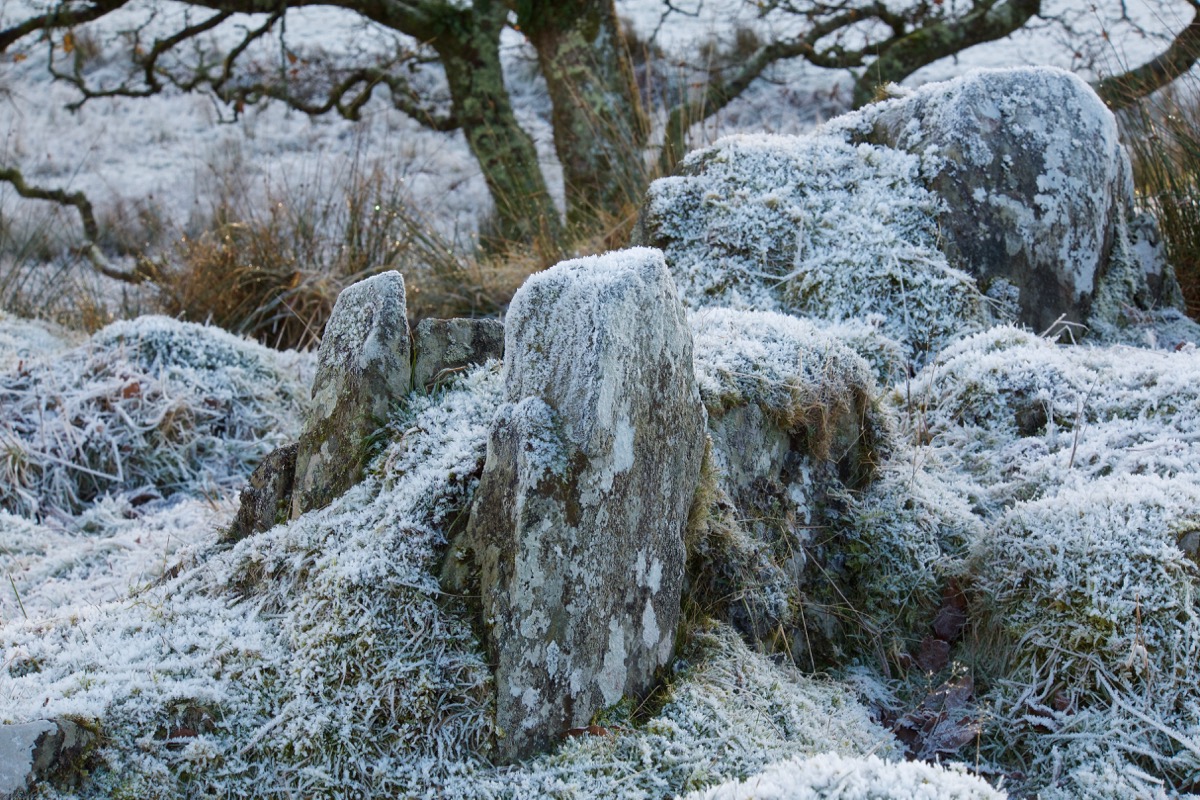
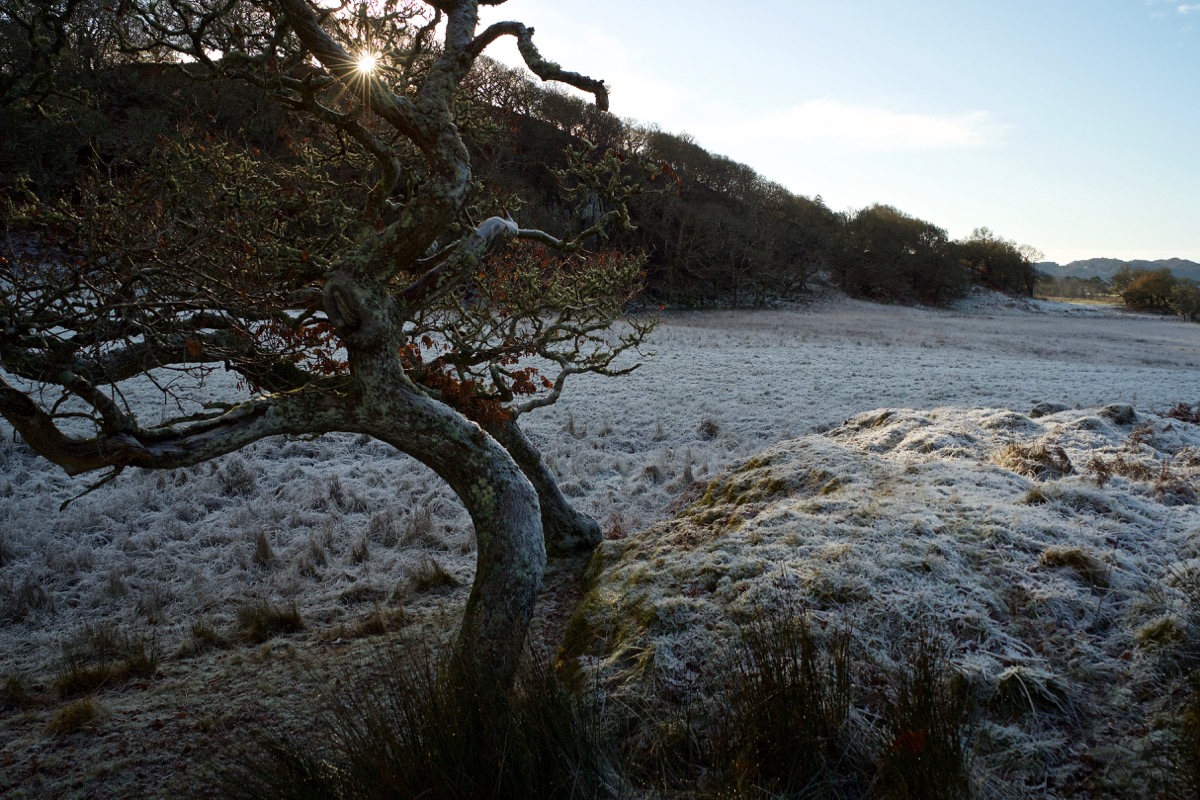
Satisfied that we’d done all we could, and eager to explore further, we rejoined the track and followed it north towards Kilbride, stopping to watch a wren foraging busily for grubs and insects in the mossy branches of an oak tree. I worry about these tiny, delicate birds in cold snaps such as this, and I was glad to see that she was finding plenty to eat.
We were looking for Kilbride Chapel, which sits high in the hills above this little glen. We found it by following a path past a farmhouse and through a patch of woodland, putting up some woodcock in the process. They are Colin’s favourite birds – he has painted them many times, and he’s always happy to see them. Emerging onto rising ground, we caught sight of the old building, now roofless, with its gable end sporting a hat of ivy. Some red deer were already running up the slope behind, and one of them stopped to watch us from the ridge, silhouetted against the skyline.
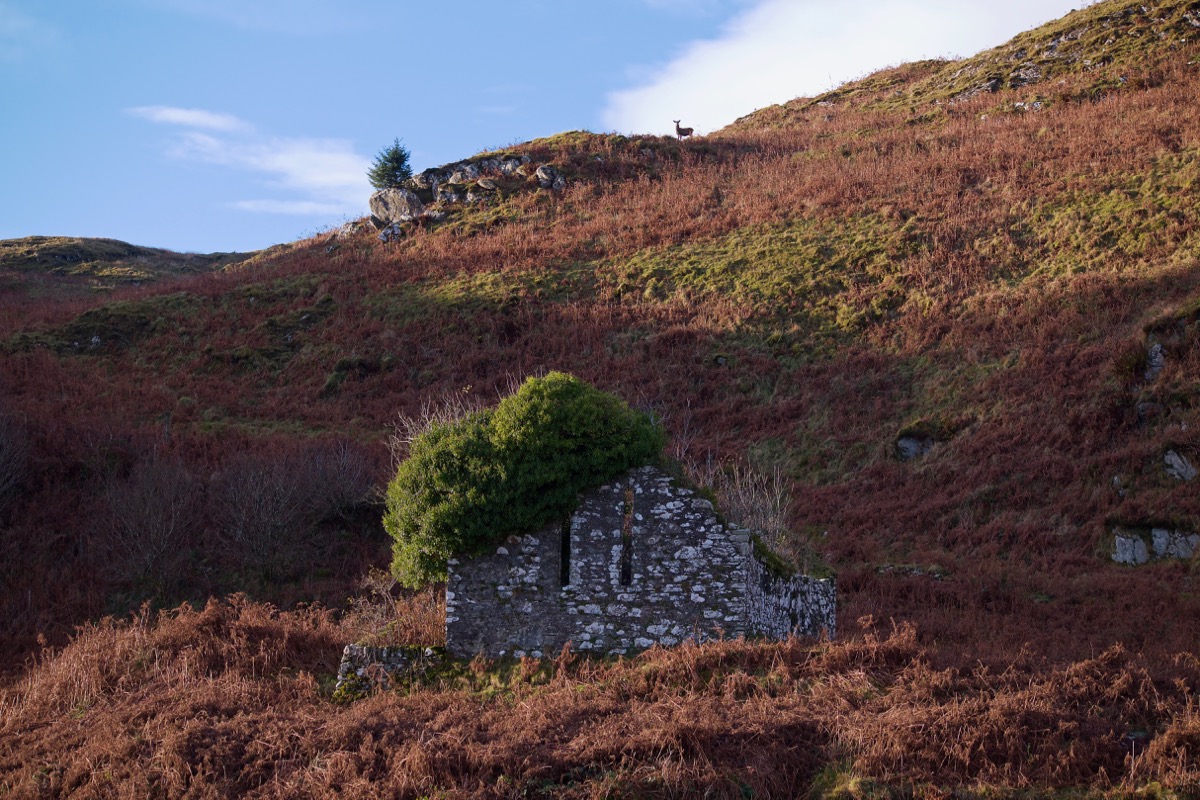
By this time I had fully tested out my theory about walking on a frozen bog, and I’ve got to say it doesn’t hold up – quite literally, in fact. As I was foolishly taking a short cut across a patch of sphagnum moss, the icy crust cracked like pastry and I found myself standing in a cold and very wet world underneath. Luckily it wasn’t deep, but picking my way out to drier ground was a challenge.
We pushed through dead bracken for the last hundred yards or so, approaching the chapel’s only entrance via some stone steps set into a partly-enclosing wall. The interior is thickly overgrown, but still atmospheric. Two tall lancet windows pierce the east gable, and beneath them we could see two small recesses or aumbries, which may have been used for storing books or vessels of sacred oil. Mounted on the west wall was an 18th century memorial to the family of James Campbell of Rhudle, who are buried here.
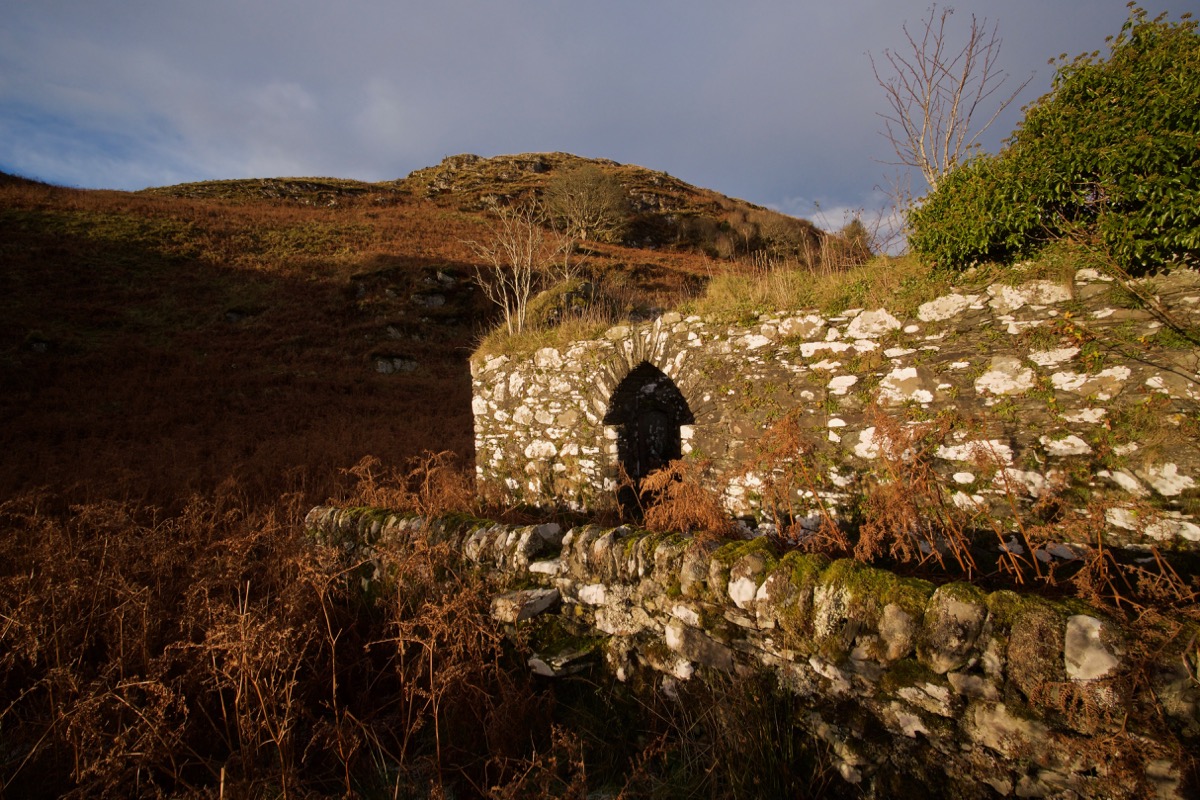
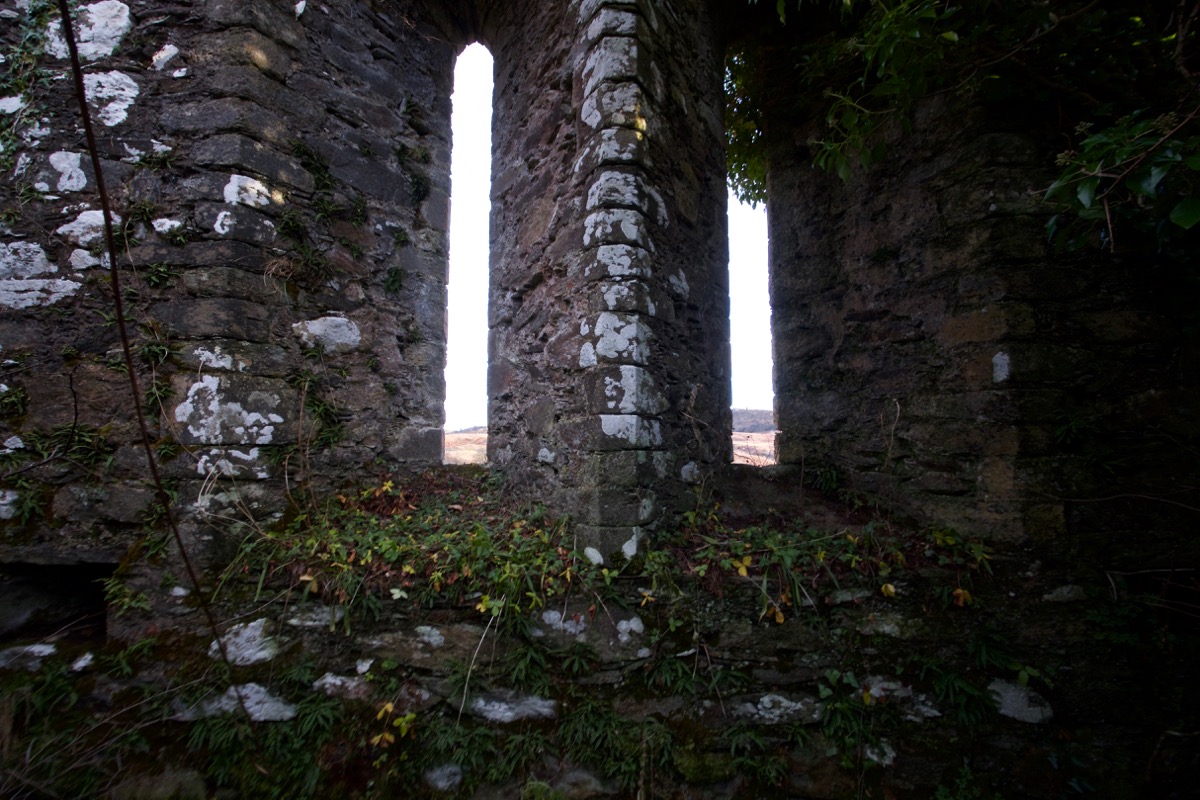
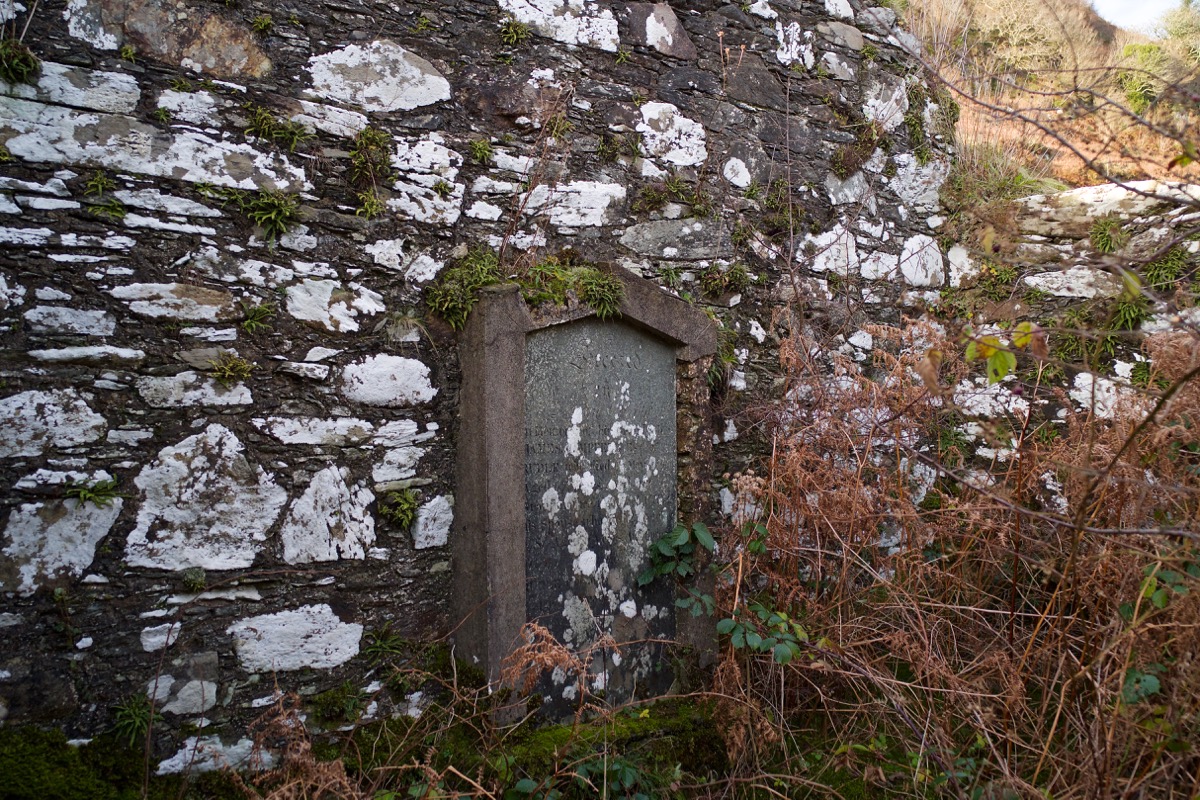
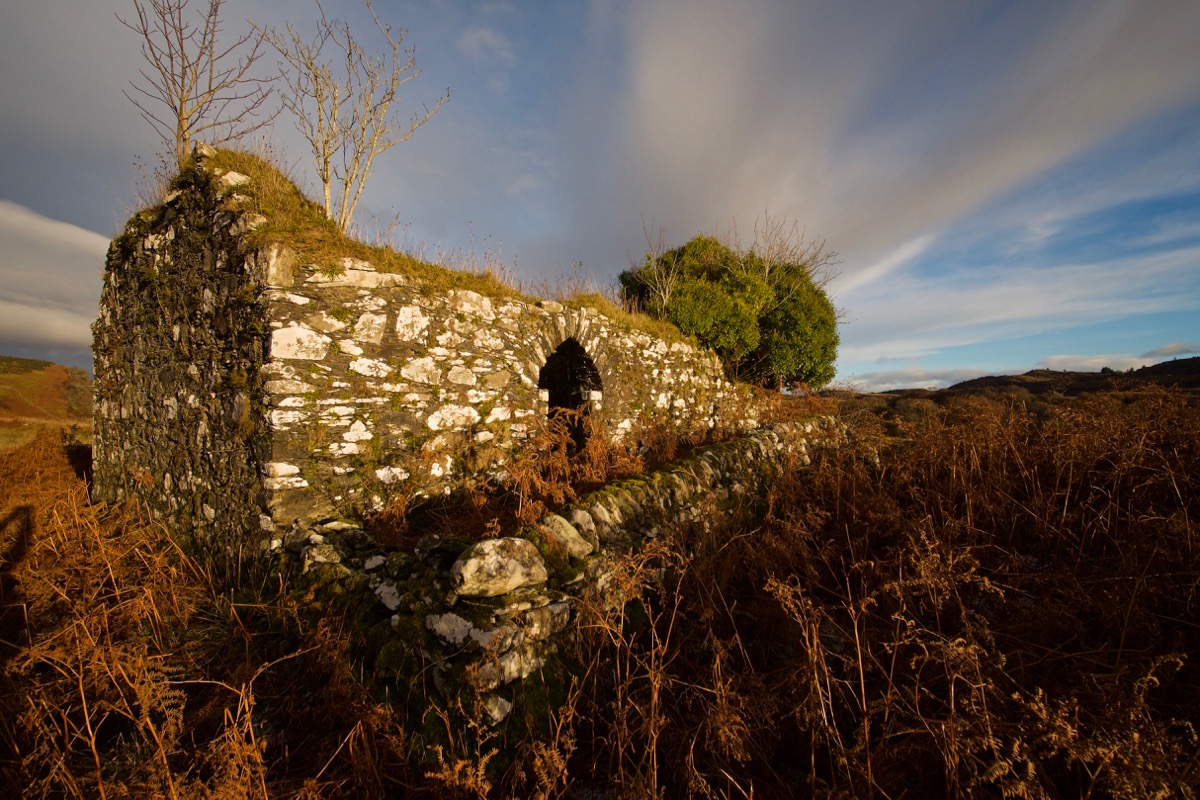
Canmore says that the structure of Kilbride Chapel ‘is of uncertain date, possibly c.1300.’ However, in the 1960s two carved cross-slabs were discovered close by, and at least one of them is thought to date from the 9th century, indicating that there was probably an older chapel here. They are now in the Kilmartin Museum. A survey of the site in 1985 revealed traces of earlier walls and the remains of another building some 10 metres to the west.
Two things struck me about Kilbride. First, its location: it must be the most remote and hard-to-access of all the early chapels I’ve visited (not counting boat trips, of course – the Garvellachs and the MacCormaig Isles take the prize for that!) Of course, the monastic travellers like St Columba and St Brendan, who came out from Ireland in the 5th and 6th centuries, embraced such remoteness and built their ‘cells’ where they felt the rest of the world was out of reach. But why here, precisely? I wonder if there was once some very old place of pre-Christian worship in this spot, such as a spring marked by a stone. Looking at the map, this area is peppered with cup-and-ring-marked rocks, suggesting that Neolithic or Bronze Age people were familiar with this landscape.
The other thing that intrigues me is its name. Kilbride, or the church of St Bride, is not an uncommon dedication but it’s a fascinating one, because an early Christian figure is tangled up with the echoes of a much older and more mysterious goddess. In Ireland, St Bride is celebrated as a saint who lived in the late 5th and early 6th centuries; but she is synonymous with the much more ancient Brigid (also Brigit, Brìghde or Bride), goddess of poetry, healing, inspiration, and the craft of smithing. Bride is associated with light (the word ‘bright’ shares the same root) and her feast day of Imbolc (1st-2nd February) celebrates the return of the light after the darkness of winter.
‘Bride is said to preside over fire, over art, over all beauty, ‘fo cheabhar agus fo chuan,’ beneath the sky and beneath the sea.’
Alexander Carmichael, Carmina Gadelica, 1900
Quite fittingly for Bride, the bringer of light, the old walls of the chapel were bathed in the low sun of a December afternoon. Despite its ruinous state, the place still holds a feeling of welcome. After all, the blackthorn, which is flourishing inside, is the first tree to blossom in spring and has a deep, protective magic. I tried to imagine people walking over here to pray, in all seasons and in all weathers. The landscape looks wild and empty, but the map shows a scatter of centuries-old homesteads and enclosures, their remains barely visible now beneath vegetation, offering the faintest hints of a lost congregation for whom this landscape was their life and their livelihood.
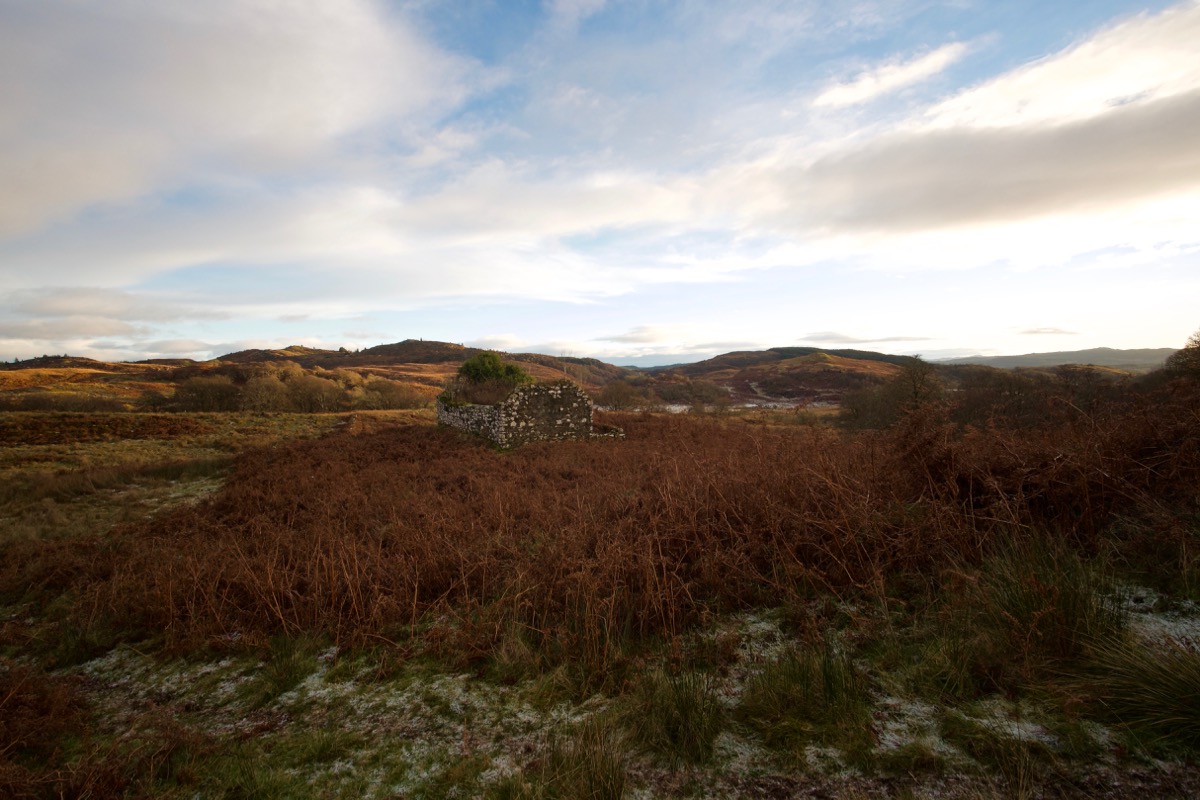
Lingering there wasn’t an option unless we wanted to spend the night out on the hillside, which would have been uncomfortable to say the least. By the time we’d got back to the car, the sun had set in an intense amber glow and the birds were heading for bed. Back at home, we examined our photos of the ‘chambered cairns’, compared them with the map, and realised we’d been looking in the wrong place. Just a stone’s throw away, further up the field, but hidden behind a wooded hill, were the real cairns.
Two days later, with the sun still glittering on a deep frost, we went back and found the first cairn straight away. Baroile cairn is noted by Canmore as having ‘four upright stones and the stump of a fifth’. Apparently, it once featured a double portal leading to a chamber just over 11 feet (3.5 metres) in length. This chamber has survived, and is now exposed to the elements. Close by, a large slab, half-buried in the ground, could be a dislodged capstone but its origin is uncertain.
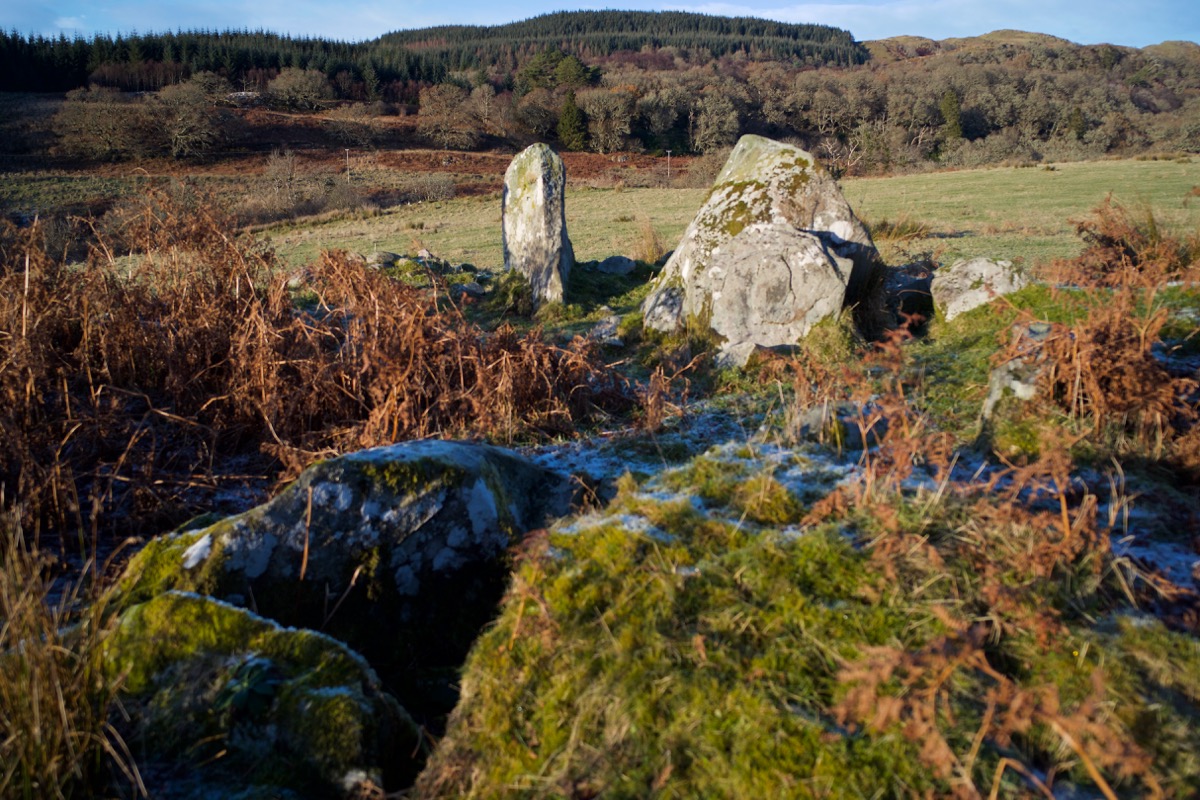
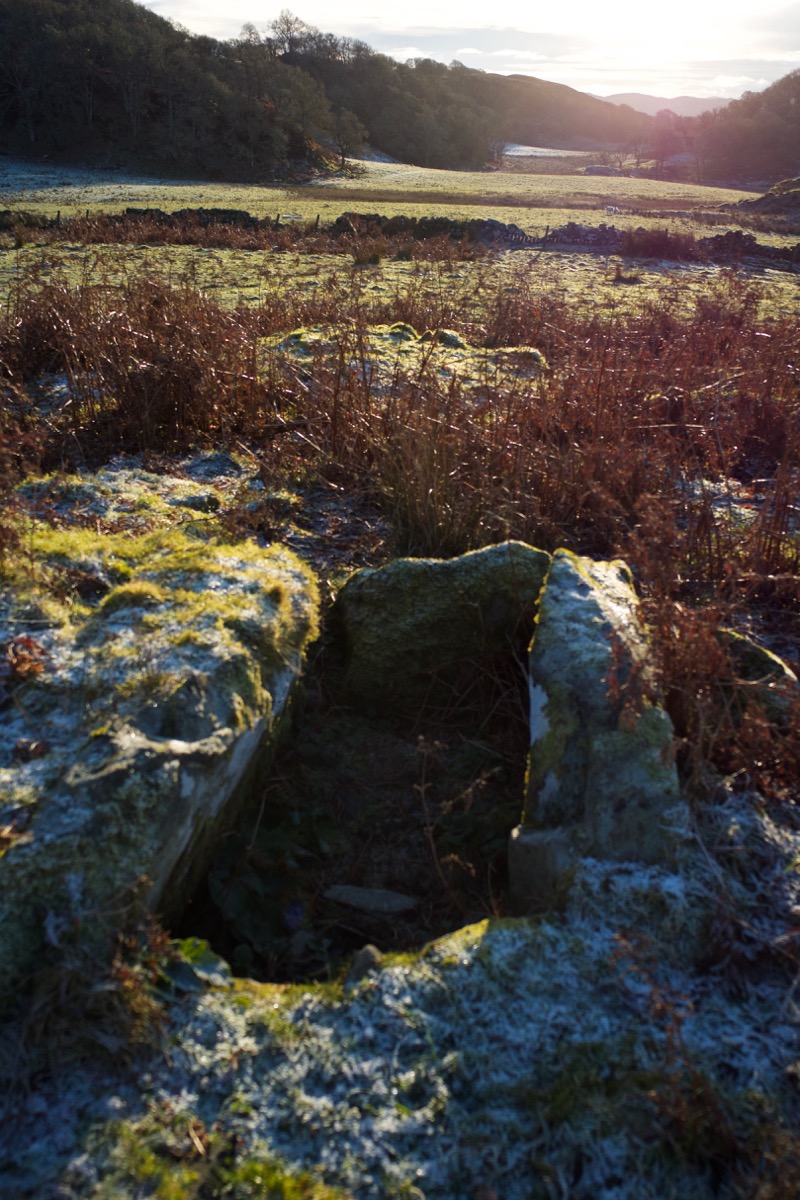
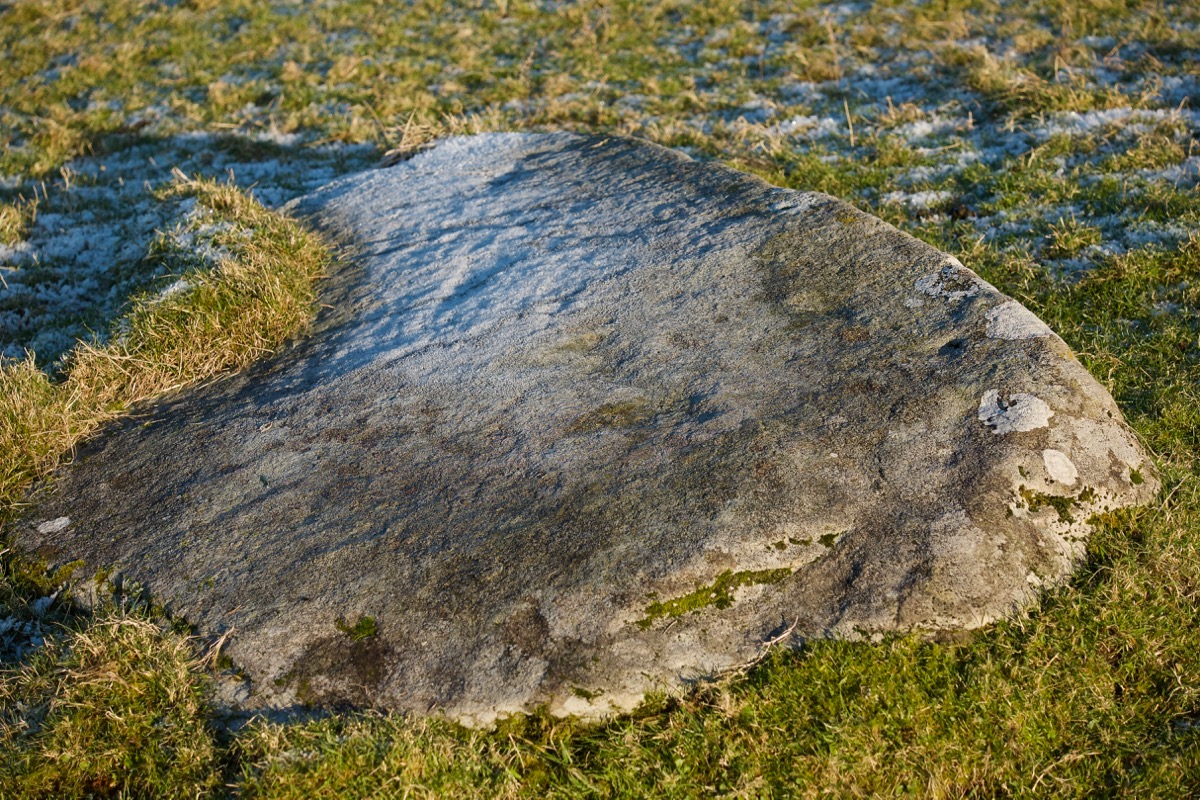
Possible capstone
A couple of hundred yards to the south is Rhudil cairn. After a bit of searching we found it just below the top of one of the many wooded knolls that make this landscape such an enchanting but slightly disorientating place. It’s almost as if they are islands in a sea of boggy grass, and I wonder if indeed they were islands many thousands of years ago, when sea levels were higher.
Rhudil cairn is even more ruined than Baroile, and consists of stony rubble scattered across a wide area with no distinct shape. The capstone, however, was easy to see because it was smooth and white with frost. It is still slightly raised, giving glimpses of a dark hollow beneath. At one time (as with Baroile) it would have been completely covered by a mound of stones.
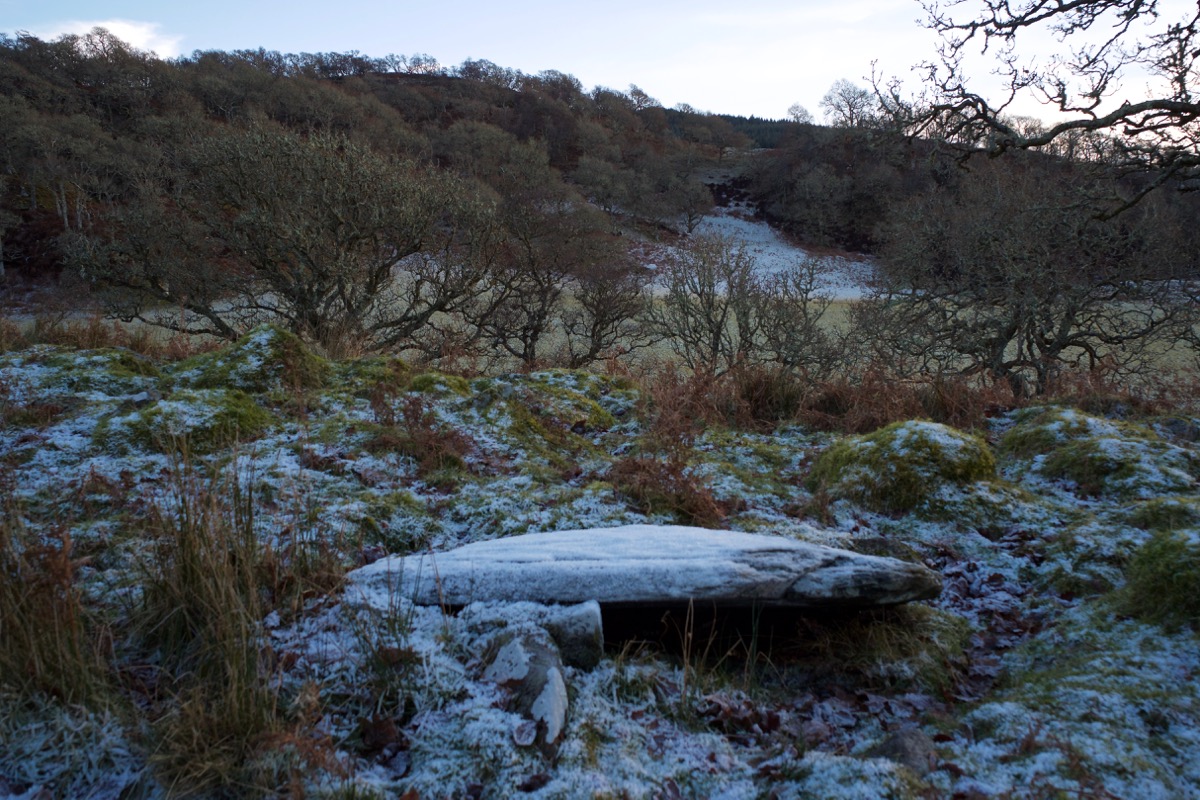
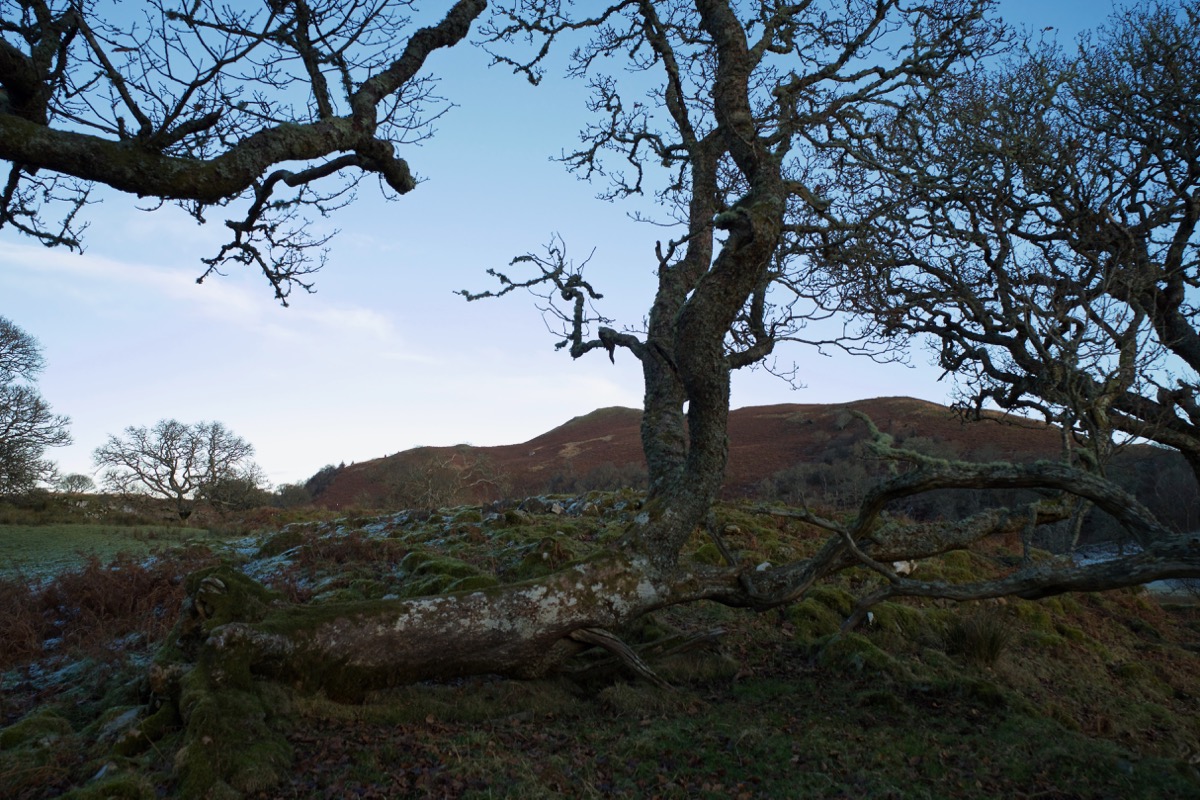
Above: a ‘phoenix’ oak (fallen and re-growing) on the side of the cairn
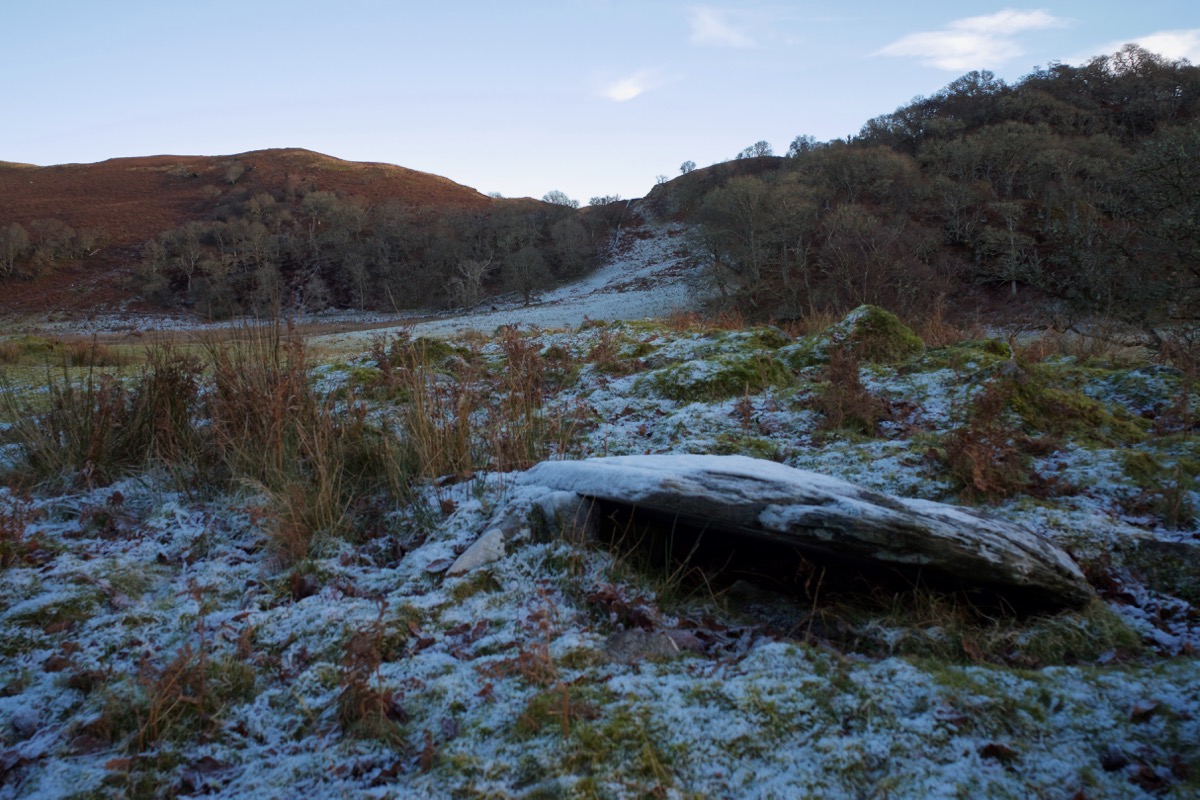
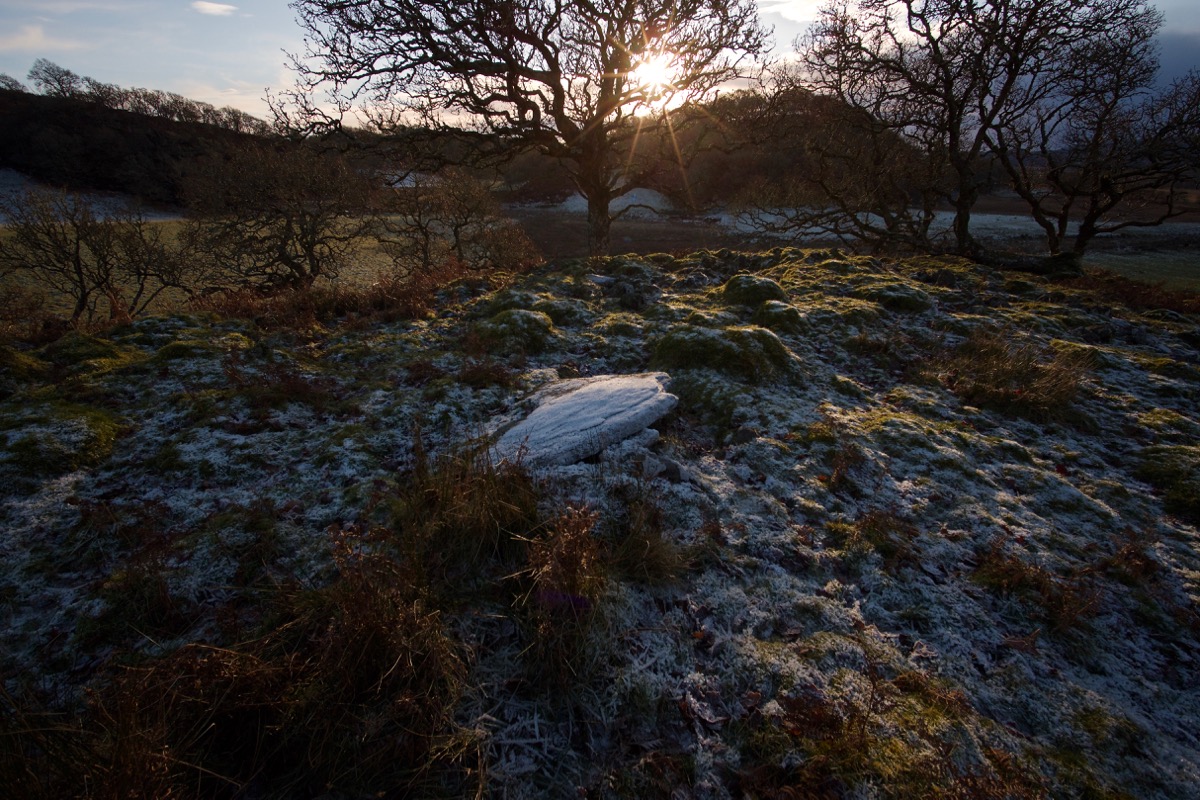
Something about the setting of this cairn struck us both. Perhaps it was the nature of its location, quietly secluded on a low rise edged with trees, with the ghostly stripes of old ‘lazybeds’ or ridge-and-furrow cultivation picked out by frost in the fields below. Or perhaps it was something less tangible, a double sense of nearness and distance, the impossible vastness of history and the only real certainty of now. I felt as if I was trying, and just failing, to grasp the fingers of those long-gone people who came here before us and left no words about their thoughts. I’d like to think that, just as we did, they stood and watched the winter sun setting over the far hill.
Reference:
- Canmore: Kilbride chapel
- Canmore: Cross-slab found at Kilbride
- Canmore: Baroile cairn
- Canmore: Rhudil cairn
- The Kist (Journal of the Natural History and Antiquarian Society of Mid Argyll) Vol.69 (2005) (PDF)
- The Kist Vol. 20 (1980) – cover shows illustration of Kilbride cross
- Alexander Carmichael, Carmina Gadelica (1900)
Images copyright Colin & Jo Woolf



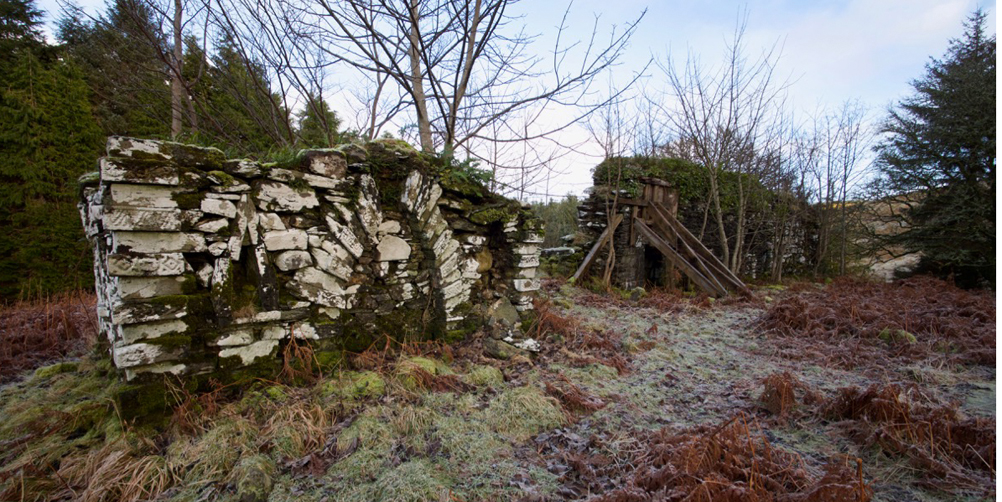
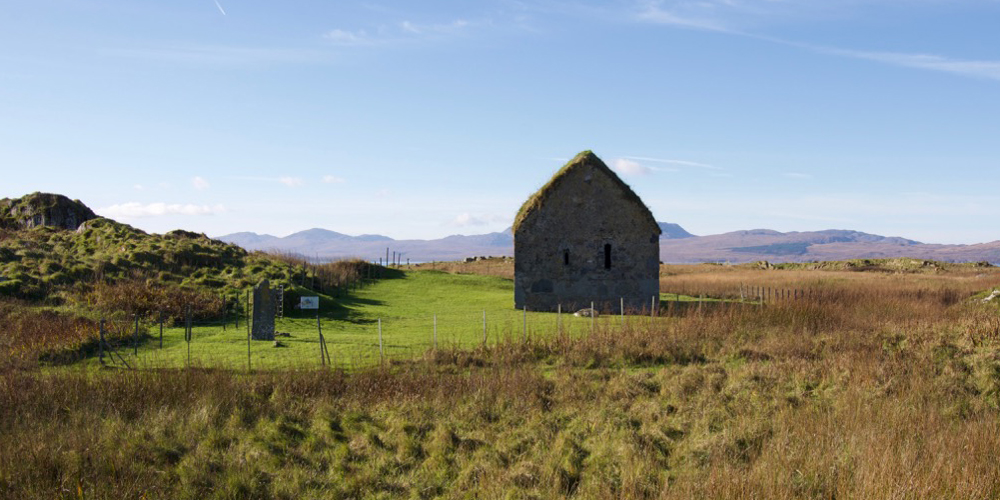
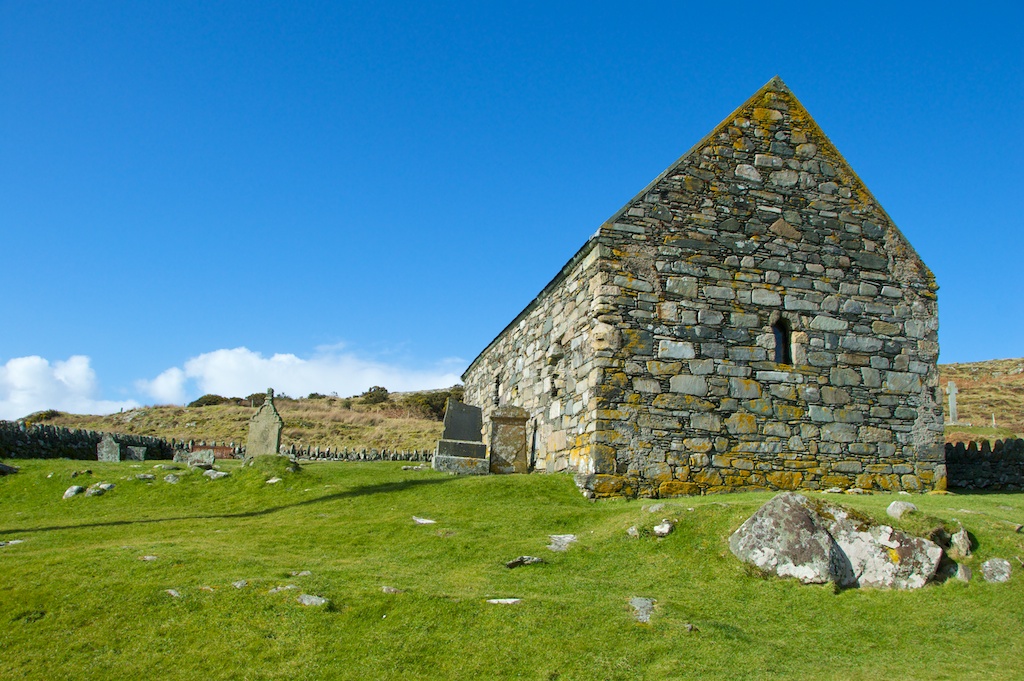
12 Comments
Bob Hay.
I can imagine the spine tingling vibes you get in those old forgotten places Jo.
What’s needed in that area is a flight over it using LIDAR. There would have to be hundreds of sites covered in bracken and scrub.
Jo Woolf
I love them all! Yes, very true – would be fascinating to see what LIDAR might reveal.
Albie Boakes
Thank you, I have enjoyed sharing your journey. My imagination runs riot wondering about the people that constructed these beautiful buildings also the families that used them.
Jo Woolf
I’m really glad you enjoyed it, Albie! I know, there are so many lost names and stories, just sitting in the landscape, locked away in these quiet places.
Richard Miles
Brilliant photos Joe,the first one reminded me of Wistmans wood on Dartmoor near where I live,ancient oaks amongst granite clitter.Those ancient chaples with so many memories locked away,just the odd clue here and there.Don’t get too high tech in discovering them,nice to savour the ambience.
Jo Woolf
Thank you, Richard! I think I’d love Wistman’s Wood – I’ve been reading about it just recently while researching a new book. The nearest we have to that kind of ‘temperate rainforest’ environment is Taynish oak woods down Knapdale way. I do love these old chapels, and yes, I agree – the magic lies in the mystery and the tantalising clues, and the not knowing!
Finola
Can’t decide if the chapel or the cairns made my spine tingle more. Beautiful post!
Jo Woolf
Thank you, Finola! Being in the right place, in the right weather, is wonderful when it happens! I loved finding these places – perhaps it was the struggle (!) but they seemed to have an untouched, magical feel about them.
Janice Boyes
Thank You so very much for giving me a look at the old places that my ancestors may have known.So Many generations, so many stories. History sometimes records the tragic stories, but I wish we could also learn the happy tales.
The land we live on here, on Vancouver Island, likely has stories, dating back to probably 12000 years ago when the first folk came from Asia. Unless they didn’t get the 5km inland through the forests , since they could harvest a good living from the sea and shore. I will never know the stories on this particular site.
Thank you for finding so much of the history of the byways of Scotland.
Jo Woolf
You’re very welcome Janice, and I’m glad you enjoyed it. Yes, I guess many happy stories are lost – they must exist though, somewhere, if we knew how to tap into them! You live in a fascinating place by the sound of it – thank you for telling me about it.
linda wilson
Beautiful atmospheric photos and interesting description of each one. It takes me back to my Scottish roots. I have been to Kilmartin and surrounding area as I have family living there. I just love the energy and try to imagine the lives of the people and hardship they must have endured all those hundreds of years ago. Thank you!
Jo Woolf
Thank you, Linda! I’m glad it brought you nearer to your Scottish roots. Kilmartin is very special, and it seems that many people feel its magical energy. There are so many places we haven’t visited yet, even in this one small area.